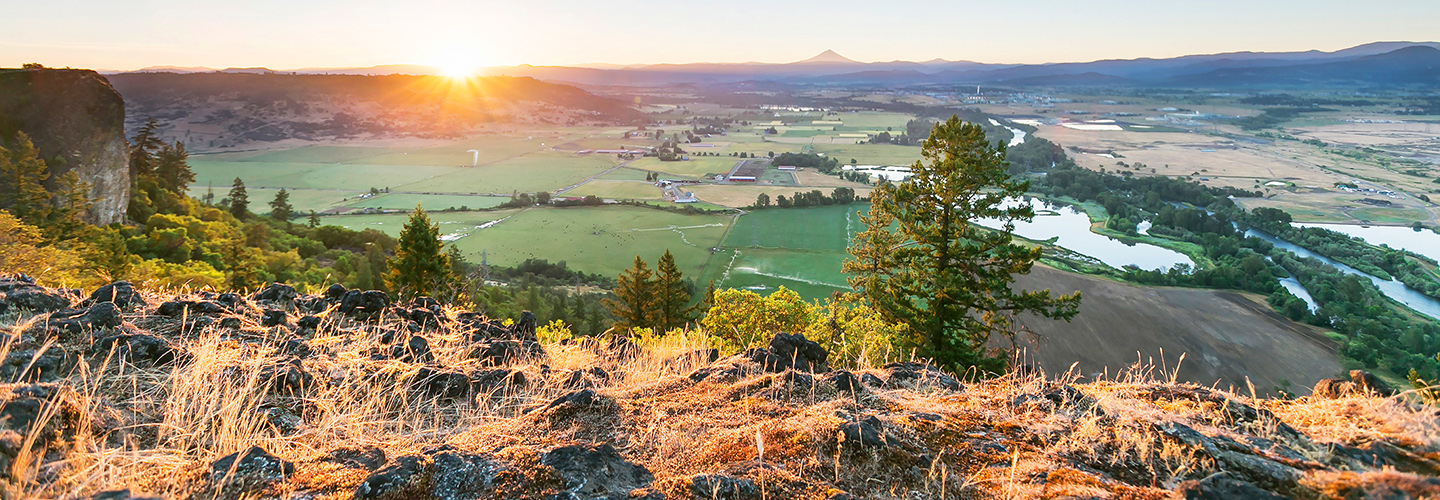



From the soil to the skies, the Heart of the Rogue overflows with diversity and deep cultural roots. Based on archeological evidence, researchers estimate that indigenious peoples and tribes have lived in the Rogue River and Illinois valleys for upwards of 15,000 years.
There are nine federally recognized tribes in the state of Oregon, including the Coquille Indian Tribe and The Cow Creek Band of Umpqua Tribe of Indians, which has a proud history in Southern Oregon, with an ancestral territory that spanned from the Umpqua and Rogue River drainages to the north and south, and the Cascade and coastal mountain ranges to the east and west.
Flourishing in Southwestern Oregon for thousands of years, the Coquille (pronounced ko-kwel) people constructed villages out of timber, and shared many tools of the trade with all their neighbors. Uprooted and nearly erased during the gold rush period, the Coquille people were forced to surrender their homeland, and cling to their culture.
Today, the Coquille proudly practices and protects its sacred culture, enforcing river protections and restoring salmon runs. Since its restoration, the tribe has regained around 10,000 acres of their homeland, and is Coos Bay’s second largest employer. The tribe’s loving, giving practices toward the land has earned it national recognition for sustainable forestry, and they are also extremely active in hospitality, education, health care, construction and many other venues.
Surrounded by mighty forests, wild rivers and mountains, Cow Creek Umpqua people built a strong connection with the land. They spent summers in the mountains and winters in the valleys, hunting wild game, gathering fish and lamprey, and storing vegetation and berries.
The tribe was one of the first two tribes in Oregon to secure a treaty with the United States of America on September 19, 1853, forged to create a relationship between the government of the tribe and the United States. The Cow Creek Tribe ceded over 800 square miles to the government, being paid 2.3 cents per acre of land. With land being flooded with settlers in search of gold throughout the 1850’s, and fear of life on depleted reservation land, much of the Cow Creek Tribe remained in seclusion or married traders, miners and pioneers in the area.
The Cow Creek Tribe never received the reservation their treaty promised, continuing to document and hold council meetings, and follow the ways of their ancestors. Today, the Tribe is buying back its land and operating various business enterprises for the economic development of the Cow Creek Tribe and the communities in which they live, including the Seven Feathers Casino Resort.

Living along the middle and upper Rogue River, the Takelma was divided by the Takelma proper (or Lowland or River Takelma), who called themselves Dagelma, meaning "those living alongside the river" and The Upland Takelma (or Latgawa) meaning "those living in the uplands." They utilized the resources of the lands to survive and thrive, and had deep, spiritual beliefs relating to the Table Rocks area. They believed that spirits inhabited the grounds around them, and practiced respect and meditation to connect with these spirits. The Takelma supplemented their diet with carbohydrates from plants, including the Camas plant, acorns and other fruits from the wilderness.
Within five years of the discovery of gold in Jacksonville during 1850, greed, open war and an influx of settlement occurred. By the end of 1856, the traditional residents of the Rogue and Illinois River valleys were forcibly removed and relocated to the Siletz Reservation on the central Oregon coast. Today, Takelma descendants carry new and ancient cultural traditions with them, many continuing to reside on or near the Siletz and Grand Ronde reservations. Much of Takelma history has been recovered and restored, and in 1977, the Confederated Tribes of Siletz Indians became the second tribe in the nation to have their termination act repealed with passage of the Siletz Restoration Act. The Grand Ronde Community also reorganized and was restored in the 1980's.
"Many people mistakenly believe that all the Rogue River Indians were wiped out a century and a half ago. It's not true; there are more than 70 descendants of Chief Harney alive today. I am a living link with the ancestors of this land."
- Agnes Baker-Pilgrim, or “Grandma Aggie”, granddaughter of George Harney, former Chief.
Set among mountains and stunning forestry, the valley has much to offer its visitors. Medford’s most important watershed, Roxy Ann Peak, offers 1,700 acres of hiking, biking and equestrian trails for you to explore. To the north, the Table Rocks tower above the Rogue River and surrounding valley, filled with unique, protected flora and fauna you won’t find anywhere else in the world. Carved throughout the land, the Rogue River is filled with world-class salmon and steelhead fishing, and unique experiences for the whole family. Nicknamed the “highway of waterfalls”, the Rogue-Umpqua Scenic Byway is also a must-see.
Celebrating the traditions of dance and music, the Native American Arts Festival and Mother’s Day Pow-Wow is held at Riverside Park each May. Hear stories from an array of vendors, learn to craft traditional pieces, and see a variety of crafted quilts from the Rogue Valley Piecemakers.
In honor of Indigenous Peoples’ Day , Southern Oregon University hosts an annual Salmon Bake at the Stevenson Union Courtyard. Led by Tribal citizens and Elders from each of the nine federally recognized tribes, watch traditional dances, listen to ancestral hand drum songs and partake in the community round dance.
Medford abounds with deep, cultural practices and beliefs, rooting each beautiful landmark to its ancestors. Whether you choose to visit or you’re a local, it is important to know the history of the grounds you’re on, and their strong connection to the Native Nations. Please travel respectfully, and discover more about each of the tribes by visiting their websites: Cow Creek Band of Umpqua Tribe of Indians, Coquille Indian Tribe, Takelma Tribe, and Klamath Tribes.